QuestionI have had Russian tortoises for almost 8 years now. I bought Sven at approximately 6-8 months old (according to the sales associate at Petco) and have had him since July 2007. I had Sven for a year before buying a second turtle in July of 2008. They have both been happy and healthy for years. They are in a 20 gallon tank, but I do not have a lid on it to help with air circulation. I know a tank isn't the best option, but when I bought them, I was in college. The tank was a requirement to keep them in my dorm room. I have always used the same type of bulb. It is not one specifically with UVB, but does have UVA. I feed them a mixture of kale and green leaf lettuce. They have always loved anything leafy and green. The substrate is EcoEarth Coconut Fiber. I usually keep it damp, but over the winter it got very dry. My attentions to the conditions of the enclosure were too lax over the winter, and now I'm afraid that Sven is paying the price.
The problem now is that Sven is lethargic, has lost his appetite, and seems to have lost a good bit of weight. There has always been food competition between the two torts and Sven usually loses out to his younger brother. He may not have been getting the nutrition I thought he was for longer than I know.
He is more responsive when I soak him in lukewarm water. I recently purchased a UVB bulb for him, cleaned his tank and gave him fresh water and clean substrate. I believe that he is probably dehydrated, but seems to be feeling a bit better since I have been soaking him twice a day for the past few days. What really concerns me is that that yesterday I noticed red spots on the scutes around the rear of the carapace. They are small, and there is one per scute. The spots seems to be inside the shell and they seem to be blood red colored. I'm concerned that it may be septicemia. I have an appointment with the vet set up, but they can't see him until Monday. Is there anything else I can do between now and then to make him feel better? Do you advise separating the two tortoises until I know what is going on? Also is there any way I can get him eating anything? I can't be sure when the last time he ate anything was... Is it possible to force feed tortoises?
Thank you for your help! The other tortoise is active. He is eating, sleeping and trying to escape, just like he always does.
AnswerHi Stef,
I would see if at all possible the vet can see Sven sooner. If it is septicemia,, time is of the essence. It can be rapidly fatal, and is often fatal even with prompt treatment. If it's something else, treatment sooner isn't a bad thing. Septicemia can look like what you described--pink/reddish areas on the shell or skin where there appears to bleeding under the surface, along with lethargy and lack of appetite. If you google "turtles with septicemia" and click on images, you'll see plenty of pictures of various stages that may help give you a better idea if this is what Sven has. He will also become progressively more lethargic and obviously ill.
You do need to make some significant changes to how you're keeping your tortoises. First of all, you need to get them out of that tank. I cannot emphasize this enough. Tanks aren't good for tortoises in general, and a 20 gallon tank is much, much too small for even a 2" hatchling. For two adult males, it's the equivalent of two humans living in a small closet. You need to get them into something big, open, and airy. You can build a tortoise table, use an old bookcase turned on its back and lined with plastic, stock tanks, etc. For two Russian males, you need about 4 x 6 of indoor space. Ideally, they should also have an outdoor pen for the warmer months so they can get natural sunlight and graze.
The substrate should be a mix of coir and playsand--this is less dusty than coir alone. Mix the two together in a 50/50 ratio, and then keep it slightly damp at all times. Dehydration is often a significant problem in captive tortoisess kept indoors, and with the tiny enclosure it's very likely that both your tortoises are significantly dehydrated. In the wild, they spend much of their time in burrows where the humidity is much higher than on the surface. In captivity, if they can't burrow to avoid the constant heat of the basking bulb, we need to provide additional moisture. Substrate depth should be enough for them to dig in completely, so at least 4", and 6" or deeper is better. Be sure to check the substrate every few days and add water as necessary to keep it a bit moist, and make sure there is a shallow water bowl large enough for them to fit into completely.
Make sure your temperatures are correct. You should have a basking area that's about 90 degrees (measure on the substrate under the lamp, not air temperature), and cooler areas around 70 degrees.
You need to get more variety in their diet. Kale is fine, and lettuce is OK as an occasional part of the diet, but not as a staple. Better is to feed a variety of turnip and mustard greens, kale, collards, raddichio, endive, dandelion, spring mix, and as many weeds as you can (dandelion, chicory, sow thistle, plantain, clover, mallow, hawkbit, etc.). Flowers such as abutilon, hibiscus, viola, nasturtium, etc. are also good, along with prickly pear cactus. If you have an outdoor pen, you can plant it with weeds and edible plants and let the tortoises graze for themselves. Put a cuttlebone in the enclosure so the tortoises can self-regulate their calcium intake.
You didn't say what kind of basking bulb you have, or what brand of UVB bulb you bought, but I would use a 100 watt ZooMed Powersun. This is a combination heat/UVB bulb, and the only one I can recommend as being reliable in terms of UVB output. It needs to be changed yearly. The alternative is to use a tube bulb--a Reptisun 10.0. These don't give off heat, however, and need to be changed every six months. The coil UVB bulbs and other brands give off little to no UVB, or are unreliable in terms of consistent output (I have friends who do testing with solar meters).
For now, I would soak both of them daily for 4-5 days, then continue to soak 3-4 times a week. Try to get them into something else while you're planning a bigger enclosure--even a large plastic bin will do, if it's bigger than the tank. Separation is also a good diea, if you have two enclosures you can use. At this point, it's unlikely that Sven will eat anything without vet treatment, but the dehydration at least can be treated at home. Force feeding is not something I recommend because it's stressful for the tortoise and can be dangerous; if he's at serious risk of starvation, the vet should put a feeding tube in. I would also request that the vet do an x-ray to check for bladder stones, which are very common with tortoises that are kept too dry.
Oh, and just as an aside, Petco doesn't really have a clue as to how old their tortoises are. I don't know why they do it, but they seem to tell everyone their Russians are between six months and a year old, and it's just flat-out not true. A Russian that age is much, much smaller. The Petco Russians are wild caught and mature or just sub-mature adults, and a minimum of five years old (most are probably 10 years old or more). Pet store employees don't usually know much about the animals they're selling, unfortunately.
Sorry to kind of bombard you with information. If anything I wrote is unclear, or you have more questions, please post back. If you set your post to private, I'll give you my email and you can contact me directly with questions. And please let me know how Sven is doing!

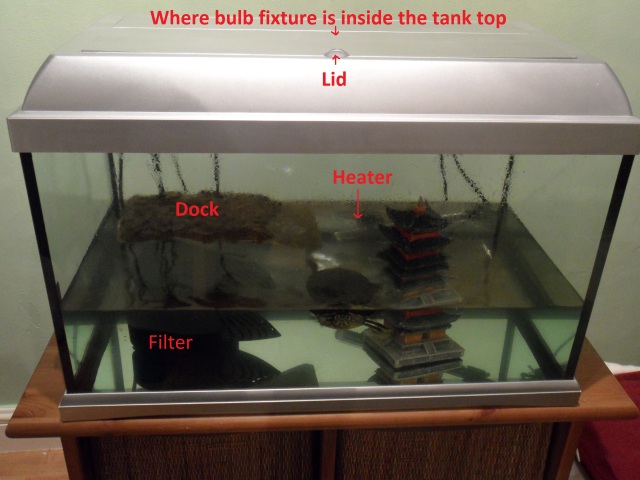 General terrapin supplies
Question
My terrapins tank
Hi, I just need some
General terrapin supplies
Question
My terrapins tank
Hi, I just need some
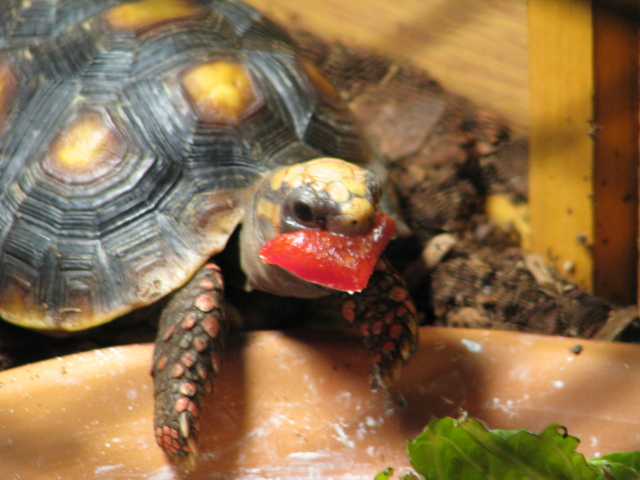 CONSTIPATION
QuestionQUESTION: HI. I HAVE A 6 MONTH OLD RED FOOT TOR
CONSTIPATION
QuestionQUESTION: HI. I HAVE A 6 MONTH OLD RED FOOT TOR
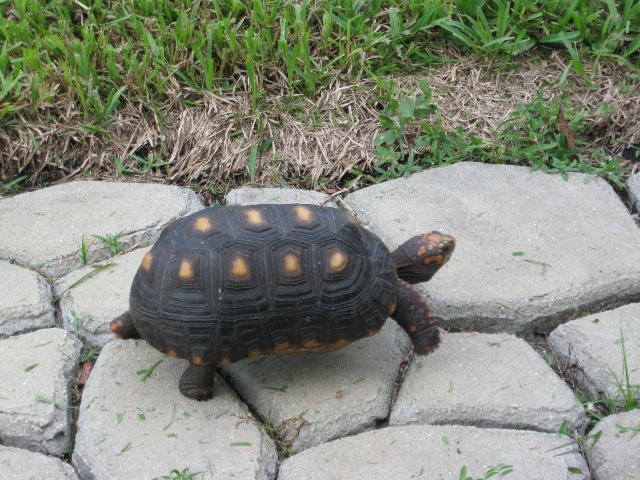 What kind of turtle?
Question
Turtle 1
I was mowing the lawn on Friday and
What kind of turtle?
Question
Turtle 1
I was mowing the lawn on Friday and
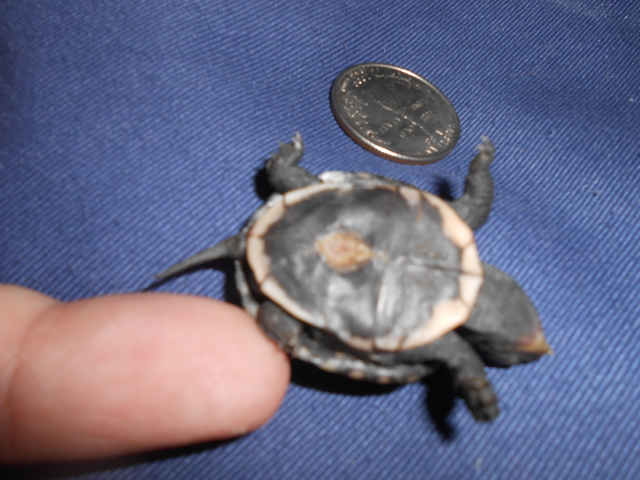 identifying a hatchling
Question
Turtle Turtle2
I found a turtle o
identifying a hatchling
Question
Turtle Turtle2
I found a turtle o
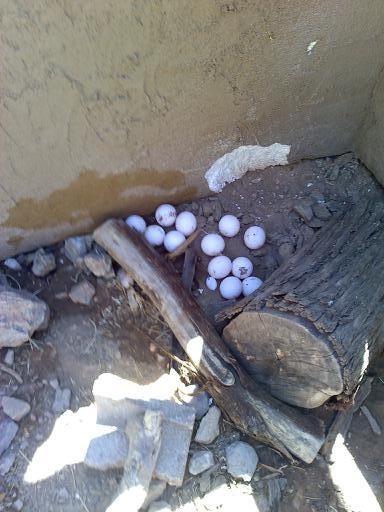 tortoise laid eggs on the ground
Question
6-4-10
I have a 9 year old, approx 17, healthy
tortoise laid eggs on the ground
Question
6-4-10
I have a 9 year old, approx 17, healthy